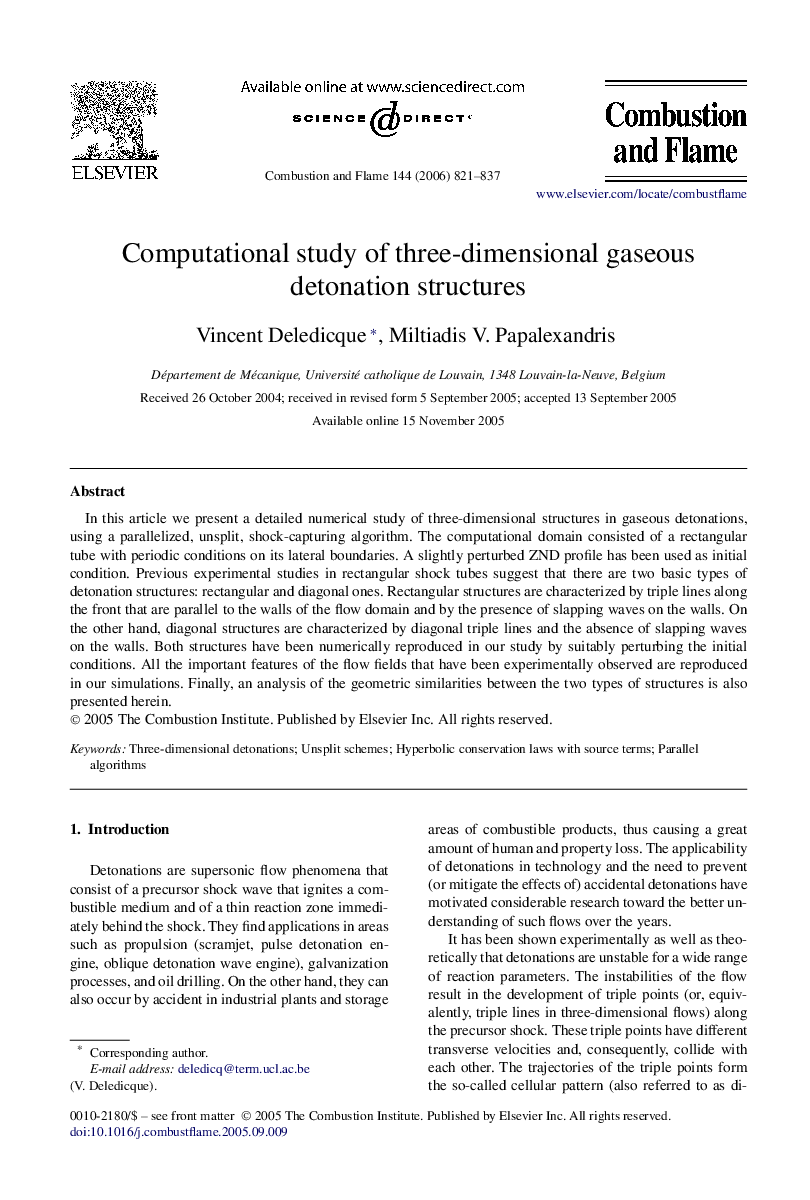| Article ID | Journal | Published Year | Pages | File Type |
|---|---|---|---|---|
| 170212 | Combustion and Flame | 2006 | 17 Pages |
In this article we present a detailed numerical study of three-dimensional structures in gaseous detonations, using a parallelized, unsplit, shock-capturing algorithm. The computational domain consisted of a rectangular tube with periodic conditions on its lateral boundaries. A slightly perturbed ZND profile has been used as initial condition. Previous experimental studies in rectangular shock tubes suggest that there are two basic types of detonation structures: rectangular and diagonal ones. Rectangular structures are characterized by triple lines along the front that are parallel to the walls of the flow domain and by the presence of slapping waves on the walls. On the other hand, diagonal structures are characterized by diagonal triple lines and the absence of slapping waves on the walls. Both structures have been numerically reproduced in our study by suitably perturbing the initial conditions. All the important features of the flow fields that have been experimentally observed are reproduced in our simulations. Finally, an analysis of the geometric similarities between the two types of structures is also presented herein.
